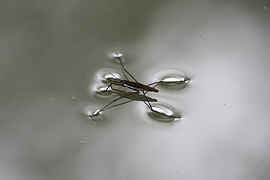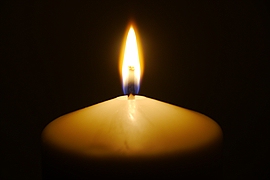The chemistry is right - talks on chemistry and catalysis
Of artificial and extra-terrestrial life, catalysts and enzymes, Einstein and Dirac: learn interesting, curious and entertaining facts from the colourful worlds of chemistry and catalysis!
 |  |
18:00-18:30 Surface tension and its consequences © flickr.com / GollyGforce - Living My Worst Nightmare | 23:00-23:30 The chemistry of a candle flame © UniCat / Martin Penno |
All presentations will be conducted in German!
| Time | Project Title |
|---|---|
| 18:00–18:30 | “Surface tension and its consequences” We come across it at every turn in our daily lives. It is surface tension that holds beer foam and mousses together. Presentation by Prof. Regine von Klitzing |
| 19:00–19:30 | "The CO2 discussion: Data and facts for joining in" We will take a look at the current debate on climate from a chemist's point of view. One focus will be the quantitative view on flows of carbon dioxide and a comparison of different alternatives for relieving the atmosphere of CO2 emissions. Presentation by Prof. Reinhard Schomäcker |
| 20:00–20:45 |
"How does a biological fuel cell work?" Biological fuel cells work without expensive platinum. Prof. Andrea Mroginski will provide an overview of experimental and theoretical research methods on biological fuel cells. In biological fuel cells, electricity is generated by biochemical processes, and activation occures through the use of enzymes. The prerequisite for production of efficient biological fuel cells is the accumulation of enzymes on the surface of electrodes. During this process, the structural and electrical properties of the enzymes should not change. |
| 21:00–21:45 | "Can science create new life?" Exaggerated descriptions of research objectives in synthetic biology have attracted the interest of the media. In his presentation, Prof. Budisa will examine the question, "What is life?" and indicate whether it is possible to create life in the laboratory on a different basis than what has been known until now. |
| 22:00–22:30 | "Art and Chemistry - taking a mobile X-ray lab through museums" A micro X-ray fluorescence spectrometer can be used as a nondestructive method to determine age, authenticity and origin of works of art. Presentation by Prof. Jörn Müller |
| 23:00–23:20 | "The chemistry of a candle flame" Playing with candles and matches fascinates many people. Yet the chemistry behind these processes is in no sense trivial. Which is the hottest part of the flame? Where does soot come from, and why is the wick bent? A presentation by Dr. Martin Penno on candles, wax and lighters. |
Location:
House of Chemistry (Haus der Chemie), Lecture Hall TC 6
Time:
17:00 to 23:20; duration: 20/30/45 minutes
Children:
For children age 10 and older and for school groups
Type of event:
Demonstration, experiment, presentation
Accessibility:
Weelchair accessible
